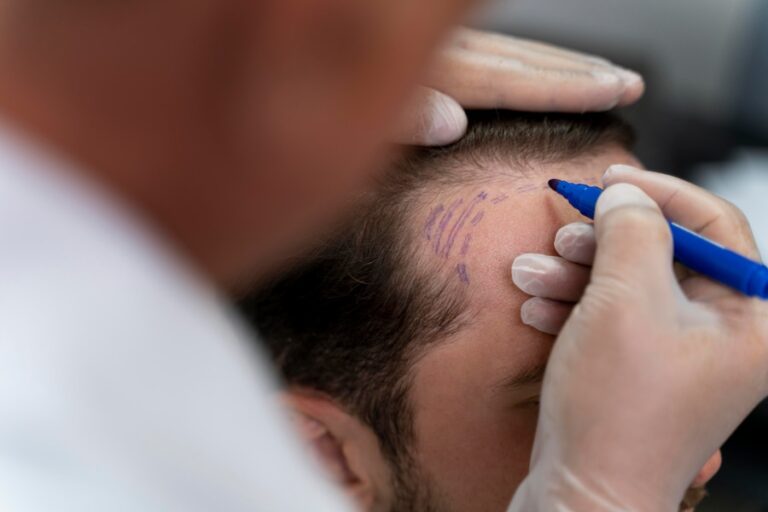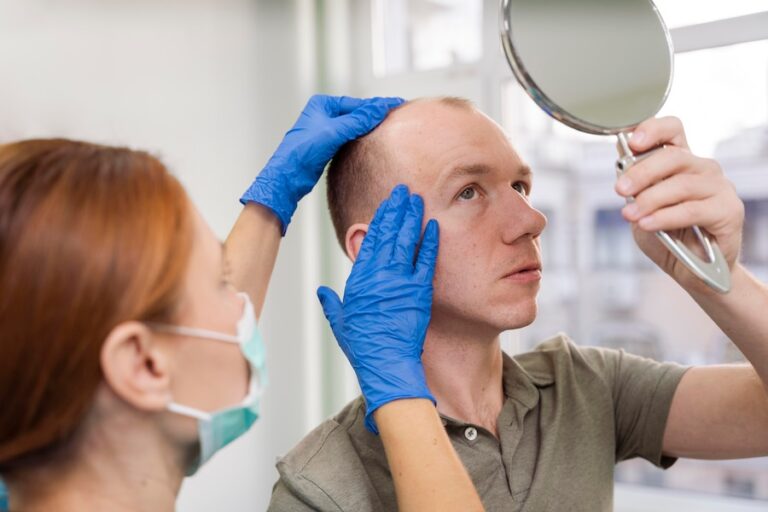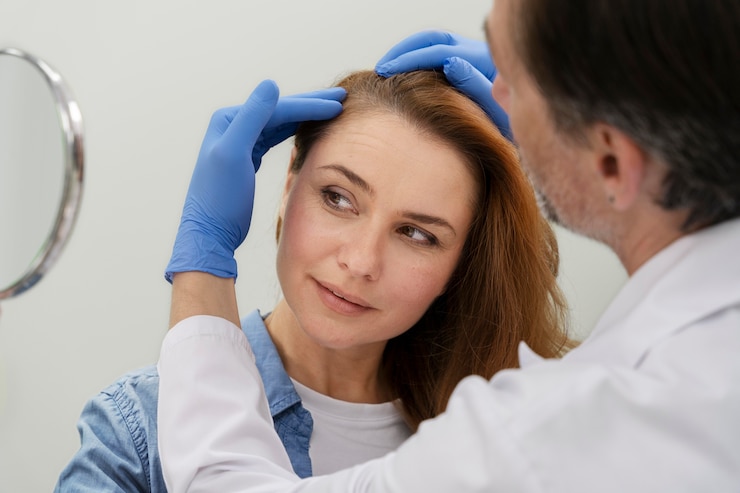Fading the Marks Understanding and Treating Acne Scars.
Acne is a common skin condition that affects people of all ages, but its impact often extends beyond the initial breakouts. For many individuals, acne scars serve as a lasting reminder of past skin struggles. Understanding the types of acne scars and exploring available treatment options can empower those seeking to diminish or eliminate these marks. This article delves into the world of acne scars, shedding light on their causes and presenting various approaches to address them effectively.
To Know More About It Please Click Here
Types of Acne Scars
- Ice Pick Scars: These are narrow, deep scars that resemble small puncture marks on the skin. Ice-pick scars often result from inflammatory acne and extend into the deeper layers of the skin.
- Boxcar Scars: Characterized by broad depressions with well-defined edges, boxcar scars create a box-like appearance on the skin. These scars typically result from inflammatory acne, and their severity can vary.
- Rolling Scars: Rolling scars give the skin a wavy, undulating appearance. They occur when fibrous bands of tissue form between the skin and subcutaneous tissue, tethering the skin and causing it to appear uneven.
- Hypertrophic Scars: Unlike atrophic scars (depressed scars), hypertrophic scars are raised and result from an overproduction of collagen during the healing process. They are more common in individuals with a tendency to develop keloids.
- Keloid Scars: Keloids are raised, overgrown scars that extend beyond the original wound area. While not exclusive to acne, they can develop in response to acne lesions in some individuals.
Treatment Options
- Topical Treatments: Over-the-counter and prescription topical treatments containing ingredients like retinoids, alpha hydroxy acids (AHAs), and vitamin C can help improve the appearance of mild acne scars by promoting cell turnover and collagen production.
- Chemical Peels: Chemical peels involve the application of a chemical solution to the skin, causing it to peel and encouraging the growth of new, smoother skin. This method is effective for superficial scars.
- Microneedling: Microneedling, or collagen induction therapy, uses tiny needles to create micro-injuries in the skin, stimulating collagen production and improving the texture of acne scars.
- Laser Therapy: Various laser treatments, such as fractional laser therapy, target specific layers of the skin to promote collagen remodeling and improve the appearance of acne scars.
- Dermal Fillers: Injectable dermal fillers, such as hyaluronic acid, can temporarily fill in depressed scars, providing a smoother and more even skin surface.
- Surgical Procedures: In some cases, surgical procedures like punch excision or subcision may be recommended to physically remove or elevate scar tissue.
Prevention and Self-Care
- Early Acne Treatment: Treating acne promptly can help minimize the risk of scarring. Consult a dermatologist to develop an effective acne management plan.
- Sun Protection: Sun exposure can worsen the appearance of scars. Consistent use of sunscreen helps protect the skin and prevents hyperpigmentation.
- Avoiding Skin Irritants: Harsh skincare products can exacerbate scarring. Use gentle cleansers and avoid picking or squeezing acne lesions to reduce the risk of scarring.
To Know More About It Please Click Here
Conclusion
While acne scars can be emotionally challenging, various treatment options are available to improve their appearance. Consultation with a dermatologist is essential to determine the most suitable approach based on the type and severity of scars. Whether through topical treatments, minimally invasive procedures, or a combination of interventions, individuals can take proactive steps to fade the marks of acne and regain confidence in their skin.







